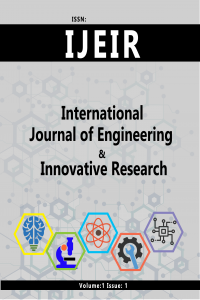Design and Development of a Grass Grinding Machine
Design and Development of a Grass Grinding Machine
___
- (1) Anand K. T. (2016), “Design and Modal Formulation of power Operated Chaff Cutter”, International Journal on Emerging Technologies (IJET), vol. 4, p.p. 0975-8364.(2) ASTM (1951). Standard for Coal and Coke, pp: 46-51.(3) Colley, Z.; Fasina, O. O.; Bransby, D. and Lee, Y. Y. (2006). Moisture Effect on the Physical Characteristics of Switchgrass Pellets. Transaction of ASABE. Vol. 49. No. 2. pp 1845-1851.(4) Earle, R. L. and Earle, M. D. (2004). Size Reduction. Web Edition ed. Unit Operations in Food Processing. The New Zealand Instiute of Food Science and Technology (Inc.).(5) Iloeje, O. C. (2002). Renewable Energy Development in Nigeria: Proceedings of a National Workshop on "Energising Rural Transformation in Nigeria: Scaling up Electricity Access and Renewable Energy Market Development”. Federal Ministry of Power and Steel, Abuja, Nigeria. March 19-20, 2001. pp180. ICEED. (6) Khurmi, R. S. & Gupta, J. K.(2005), “Machine Design”. Eurasia Publishing House (PVT) Ltd., RAM Nagar, New Delhi.(7) Kishinmoto,S.(1969), "Briquetting of sawdust and other waste materials," proc. Inst. Briquetting and Agglomeration, Sunc. Valley, Idaho, Aug.27th-29th.pp43.(8) Roger, M. R.; Mario, T. F. and Edwin C. A. (2007). Fibre Morphology in Fast Growth Gmelina Arborea Plantations. Madera Bosques, Vol. 13. No. 2. pp 3-13. (9) United Nations Development Project (2012).Africa Gender and Energy. World Health Organization (2006) http://www.who.int/heli/risks/indoorair/indoorair/en/).
- Yayın Aralığı: Yılda 3 Sayı
- Başlangıç: 2018
- Yayıncı: Ahmet Ali SÜZEN
ESTIMATION OF DEPRESSION DISEASE BY NEURAL FUZZY INFERENCE METHODD
Zekeriya AKÇAY, Remzi GÜRFİDAN
Design and Development of a Grass Grinding Machine
Godspower OJARİAFE, Ketra ABUMERE
FUZZY CONTROL OF CIRCUIT BREAKERS IN POWER TRANSFORMER CENTERS
MUSHROOM SPECIES DETECTION USING IMAGE PROCESSING TECHNIQUES
Yasemin Rukiye ERKAN, Humar KAHRAMANLI ÖRNEK
Microbial Fuel Cell Potential in Augmenting Nigerias’ Energy Mix
